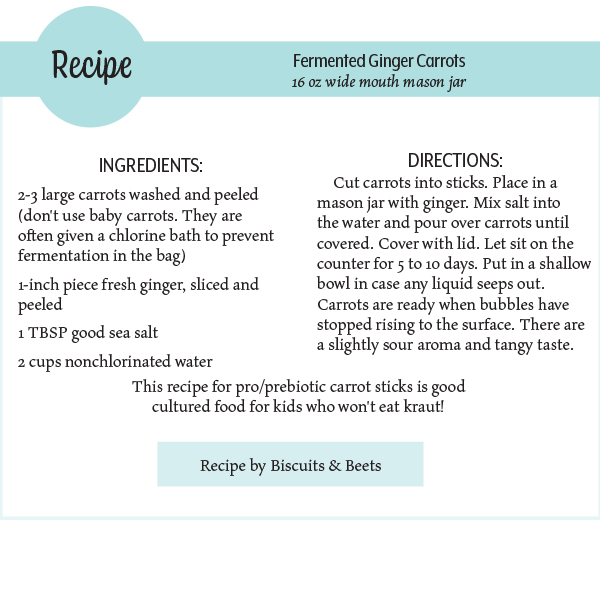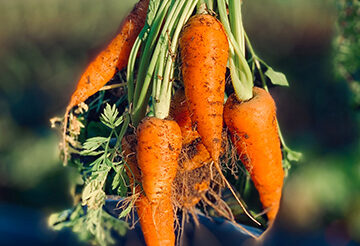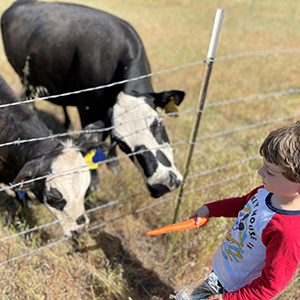Prebiotic vs. Probiotic
Which is Best for Kids?
BY GRETCHEN HEIMSOTH
 Probiotics. All the rage these days! From probiotic beverages, snack bars, and even chocolates. I’ve seen conventional cereals with the term under their name recently. One can hardly walk through the grocery store or be on social media without seeing mention of “gut-friendly” bacteria-laden products, ready to inoculate our intestines. And many of us haven’t yet heard of probiotic’ “sibling”-PREbiotics! What is all the bacterial buzz about? And does it live up to its name?
Probiotics. All the rage these days! From probiotic beverages, snack bars, and even chocolates. I’ve seen conventional cereals with the term under their name recently. One can hardly walk through the grocery store or be on social media without seeing mention of “gut-friendly” bacteria-laden products, ready to inoculate our intestines. And many of us haven’t yet heard of probiotic’ “sibling”-PREbiotics! What is all the bacterial buzz about? And does it live up to its name?
Let’s start by defining probiotics. They are live bacteria and yeasts that are good for your digestive system. These strains of bacteria have evolved with us for millennia and make up our gut microbiome. When you consider there are more of these bacteria in our body than actual human cells and the role these friendly bugs play- its hard to not give them some massive respect. They are foundational to our immune system, make most of our neurotransmitters, synthesizes nutrients and control our hormone levels. I want to bring to light that most beverages and probiotic foods offer little more than soothing feelings to the stomach. That can be great! If our goal is to truly help to repopulate the intestines, like after antibiotics, then the bacteria must survive the digestive process. A brand that needs refrigeration likely won’t withstand the heat of that process. Only probiotics that are spore (or soil-based) will do that. The microbiome is varied, and everyone is different. We don’t all have a deficiency in the handful of the most popular probiotic strains available on the retail market. Depending on the issues we are looking to help, we may find we are just wasting our money. Probiotics have their place… but the way its often approached is like a shot in the dark.
Now let’s talk about prebiotics and what they are. Prebiotics is almost just a fancy word for fiber. This exists naturally and without fermentation, in the foods, we have been eating since the dawn of time. It is the food of the microbiome. Our microbiome is inherited from our families and shaped by the foods we eat and environmental exposure. Some are referred to as resistant starch. These starches aren’t sufficiently absorbed by the small intestine and are helpful to feed bacteria in the large gut. Greens, artichokes, onions and leeks, asparagus, barley, oats, and bananas are examples of some of the best prebiotic foods. Lentils, potatoes, beans, and pasta are examples of resistant starches. Pomegranates and apples are prebiotic fruits. For healthy small and large intestines, it is best to try to include a couple of servings of these foods daily.
Now let’s talk about the best uses for probiotics and prebiotics. Especially for families. I don’t feel comfortable giving advice on probiotics for children under 1 year of age. There are safe products on the market, but this would be something to take up with your pediatrician. There is a ton of anecdotal evidence supporting the use in children-but the benefits may be strain specific. One strain helping one condition may be useless in another. Functional medicine testing could really help nail down the best course of treatment if you have a little one with persistent dysbiosis. You would have to seek a practitioner for that. Kids with compromised immune systems could even experience an infection with over the counter probiotics. Something to consider. For this reason, I’m going to focus on probiotic foods.
Yogurt, kefir, sauerkraut, and kimchee if your little one will eat it. These foods are good to include regularly into the diet. Cultured vegetables also provide fiber. Prebiotics are foundational to encourage your little one’s microflora population to be as healthy as possible, and in the balance that is best for them. In general, focus on whole-fresh fruits and veggies, as well as the foods mentioned in the prior paragraph. Try to only use antibiotics when there is no other option and watch the use of pain medicines like ibuprofen and acetaminophen. Avoid chemical food dyes and sanitizer, often in hand soap. Try to drink filtered, unchlorinated water if possible. Eliminate or seriously limit processed sugar and even fruit juice. It’s just too high in sugar. These simple steps will help lend to your family’s happy bellies!








